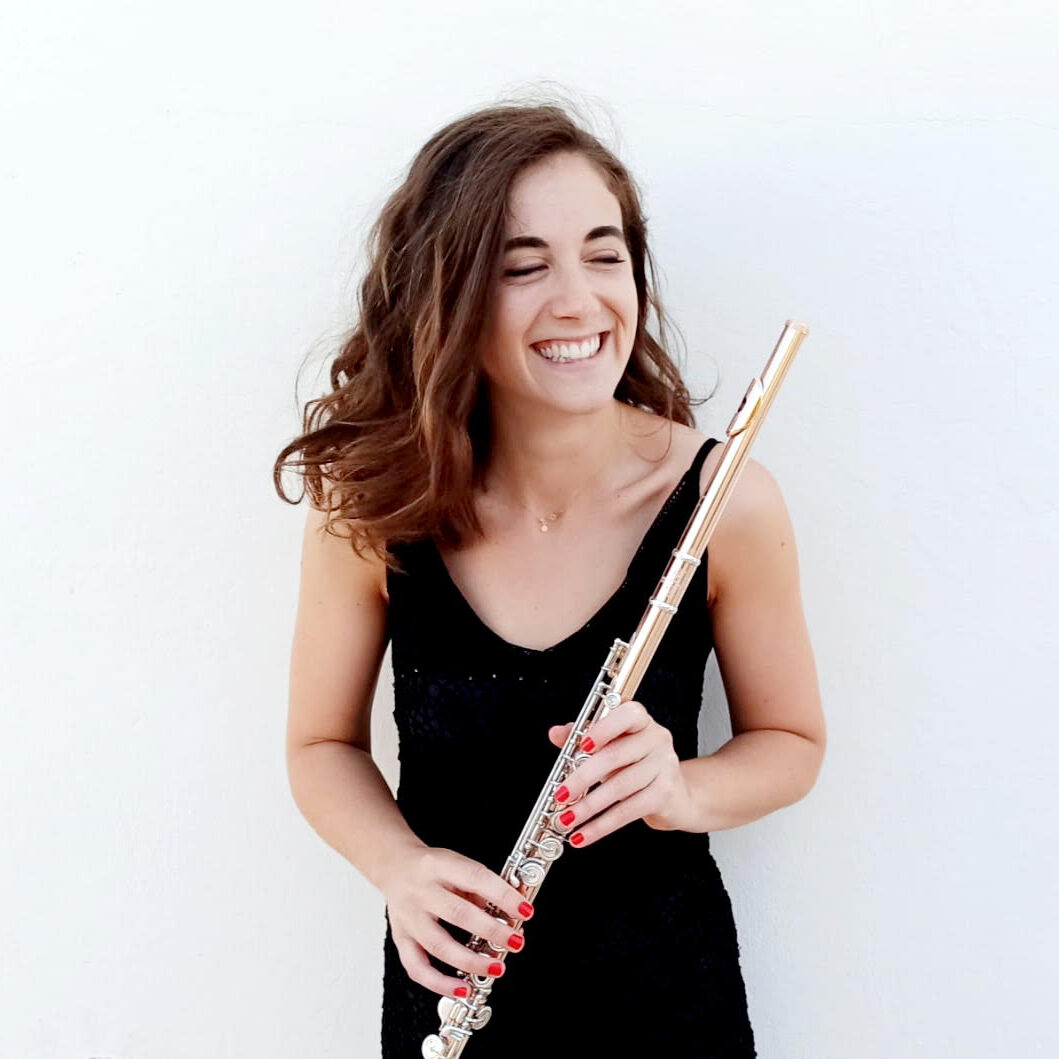The flute, as the name suggests, is played by blowing across the lips; the airflow from the mouth is perpendicular to the instrument’s bore. The smaller and higher-pitched version is called the piccolo, while larger versions include the alto flute and bass flute. The modern flute, typically made of metal nowadays, was developed by Theobald Böhm from the traverso (baroque flute), which was usually made of wood (see details below under ‘history’).
A flute consists of a narrow, straight tube with three main parts: the headjoint with a lip plate, the middle section with keys that can be operated by the fingers, and the footjoint (an optional addition) for playing even lower notes. When playing, the flute is held horizontally to the right. Its tonal range (ambitus) spans more than 3 octaves.
The flute’s sound is produced by air splitting. The airstream is split by the edge of the embouchure hole in the headjoint. Tuning the instrument is achieved by pushing in or pulling out the headjoint. Shortening the flute produces higher pitches, while extending it lowers the pitch. Adjusting lip tension also allows for slight changes in tone. To achieve a beautiful tone, players should keep their teeth apart, cover no more than two-thirds of the embouchure hole, and maintain an upright posture.
Although flutes are typically made of metal, they are classified as woodwind instruments rather than brass instruments. The distinction lies in how the sound is produced, not the material of the instrument
Register for the lessons
Trial lessons
The flute, as the name suggests, is played by blowing across the lips; the airflow from the mouth is perpendicular to the instrument’s bore. The smaller and higher-pitched version is called the piccolo, while larger versions include the alto flute and bass flute. The modern flute, typically made of metal nowadays, was developed by Theobald Böhm from the traverso (baroque flute), which was usually made of wood (see details below under ‘history’).
A flute consists of a narrow, straight tube with three main parts: the headjoint with a lip plate, the middle section with keys that can be operated by the fingers, and the footjoint (an optional addition) for playing even lower notes. When playing, the flute is held horizontally to the right. Its tonal range (ambitus) spans more than 3 octaves.
The flute’s sound is produced by air splitting. The airstream is split by the edge of the embouchure hole in the headjoint. Tuning the instrument is achieved by pushing in or pulling out the headjoint. Shortening the flute produces higher pitches, while extending it lowers the pitch. Adjusting lip tension also allows for slight changes in tone. To achieve a beautiful tone, players should keep their teeth apart, cover no more than two-thirds of the embouchure hole, and maintain an upright posture.
Although flutes are typically made of metal, they are classified as woodwind instruments rather than brass instruments. The distinction lies in how the sound is produced, not the material of the instrument



